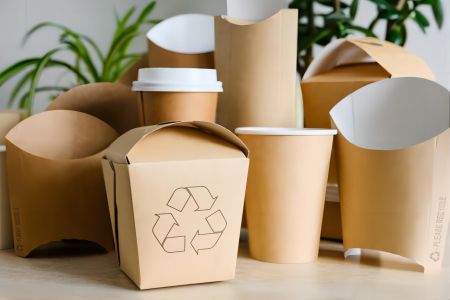Disposable Paper Food Packaging
Published on 2024/7/29

Share to:
Disposable Paper Food Packaging
This article delves into the multifaceted world of disposable paper food packaging, exploring its benefits, drawbacks, and the ongoing efforts to make it more environmentally responsible.
Disposable paper food packaging has become ubiquitous in our modern world, offering convenience and hygiene for both consumers and businesses. However, its environmental impact has become a pressing concern, leading to a complex debate about its sustainability. This article delves into the multifaceted world of disposable paper food packaging, exploring its benefits, drawbacks, and the ongoing efforts to make it more environmentally responsible.
The Rise of Paper Packaging:
Paper food packaging has experienced a surge in popularity due to its inherent advantages:
Biodegradability: Unlike plastic, paper is biodegradable, breaking down naturally over time and reducing landfill waste.
Recyclability: Paper can be easily recycled, contributing to a circular economy and reducing the need for virgin materials.
Versatility: Paper can be molded into various shapes and sizes, making it suitable for a wide range of food products, from takeout containers to cups and plates.
Cost-effectiveness: Paper packaging is generally more affordable than other disposable options, making it attractive to businesses.
Environmental Concerns and Solutions:
Despite its positive attributes, disposable paper packaging presents challenges:
Deforestation: The production of paper requires trees, raising concerns about deforestation and habitat loss.
Water and Energy Consumption: Paper production is water-intensive and requires significant energy, contributing to environmental strain.
Chemical Additives: Some paper packaging may contain harmful chemicals, such as PFAS (per- and polyfluoroalkyl substances), which can leach into food and pose health risks.
Waste Management: While biodegradable, paper waste can still contribute to landfill problems if not properly managed.
To mitigate these concerns, the industry is actively exploring innovative solutions:
Sustainable Forestry Practices: Companies are increasingly sourcing paper from responsibly managed forests, ensuring reforestation and biodiversity protection.
Recycled Paper: Using recycled paper reduces the need for virgin materials, minimizing environmental impact.
Bio-based Coatings: Replacing traditional plastic coatings with bio-based alternatives derived from renewable resources can enhance biodegradability and reduce chemical contamination.
Compostable Packaging: Developing compostable paper packaging allows for complete decomposition in industrial composting facilities, further reducing landfill waste.
The Future of Paper Packaging:
The future of disposable paper food packaging hinges on a continued commitment to sustainability. By embracing responsible sourcing, innovative materials, and efficient waste management practices, the industry can contribute to a more environmentally conscious food system.
Key Takeaways:
Disposable paper food packaging offers convenience and hygiene, but its environmental impact requires careful consideration.
Sustainable forestry practices, recycled paper, and bio-based coatings are crucial for minimizing the environmental footprint of paper packaging.
Consumers can play a role by choosing products with sustainable certifications and disposing of paper packaging responsibly.
Moving forward, the challenge lies in finding a balance between convenience and sustainability. By embracing innovation and responsible practices, disposable paper food packaging can become a more environmentally friendly solution for our food packaging needs.


 WhatsApp
WhatsApp
Send us your message
You can send an email asking for the price and detailed information of this product. We will reply you as soon as we receive your email